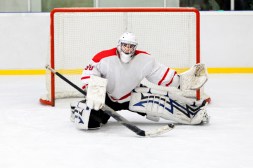Top 5 Moments When the Tuck Rule Altered NFL Games Forever
The tuck rule is one of the most controversial rules in NFL history, and its impact on games has been profound. While it was officially eliminated in 2013, its legacy continues to influence discussions about officiating and game-changing moments in football. In this article, we will explore the top five moments when the tuck rule altered NFL games forever.
The Snow Bowl: Patriots vs. Raiders (2002)
Perhaps the most famous instance of the tuck rule occurred during an AFC Divisional Playoff game between the New England Patriots and Oakland Raiders on January 19, 2002. In a blizzard at Foxborough Stadium, with less than two minutes left in regulation, Patriots quarterback Tom Brady was hit as he attempted to pass, resulting in what appeared to be a fumble recovered by the Raiders. However, after review, officials determined that Brady’s arm was moving forward when he lost control of the ball—thus invoking the tuck rule and granting New England possession. This pivotal call allowed Brady to lead his team back for a dramatic win in overtime.

The Super Bowl: Steelers vs. Seahawks (2006)
The Super Bowl XL matchup between the Pittsburgh Steelers and Seattle Seahawks also felt ripples from tuck rule controversies earlier that season. During their playoff run, several crucial calls hinged on interpretations of player control and forward motion similar to those established by previous tuck rule rulings. Although not directly cited during this specific championship game, these precedents shaped how referees approached game-defining situations under pressure—often favoring offensive players.
The ‘Tuck Rule’ Game: Chargers vs. Dolphins (2004)
In a regular-season clash between San Diego Chargers and Miami Dolphins on September 22, 2004, another ambiguous application of the tuck rule came into play when Chargers quarterback Drew Brees was hit while throwing a pass late in a tightly contested match-up. The officials ruled it an incomplete pass under the guise of protecting quarterbacks who are making throwing motions—an interpretation rooted deeply within earlier incidents involving similar scenarios from prior seasons that involved tucks or fumbles being overturned due to arm movement.
Cowboys vs. Eagles: A Late Season Showdown (2010)
On December 12, 2010, during a key NFC East matchup between Dallas Cowboys and Philadelphia Eagles at Lincoln Financial Field—a critical juncture for both teams—the Cowboys faced down penalties along with challenges regarding possession after quarterback Jon Kitna’s questionable throw fell victim to scrutiny over whether he had completed his motion before being pressured by defenders leading into contact—a direct nod towards interpretations afforded through years of applying what fans refer to as ‘the Tuck Rule.’ Such moments highlight how deeply entrenched this ruling became throughout various seasons across different contexts within league games.
Revisiting History: Impact Beyond Individual Games
The prevalence of ‘tuck’ instances spread far beyond individual contests; they shaped perceptions around officiating credibility overall while creating debates about player safety amidst aggressive defenses eager for turnovers or sacks without risk assessments involved therein—which ultimately culminated into necessary reforms post-2013 eliminating said ruling altogether yet leaving behind its complicated legacy still discussed by analysts today.
In conclusion, while no longer part of NFL regulations since its removal eight years ago now—the influence exerted through these memorable instances remains vivid among fans recalling significant turning points attributed directly towards enforcement surrounding this contentious guideline known widely simply as ‘the Tuck Rule.’ Its lasting effects continue inspiring conversations regarding fairness within officiating protocols throughout all levels played today.
This text was generated using a large language model, and select text has been reviewed and moderated for purposes such as readability.











